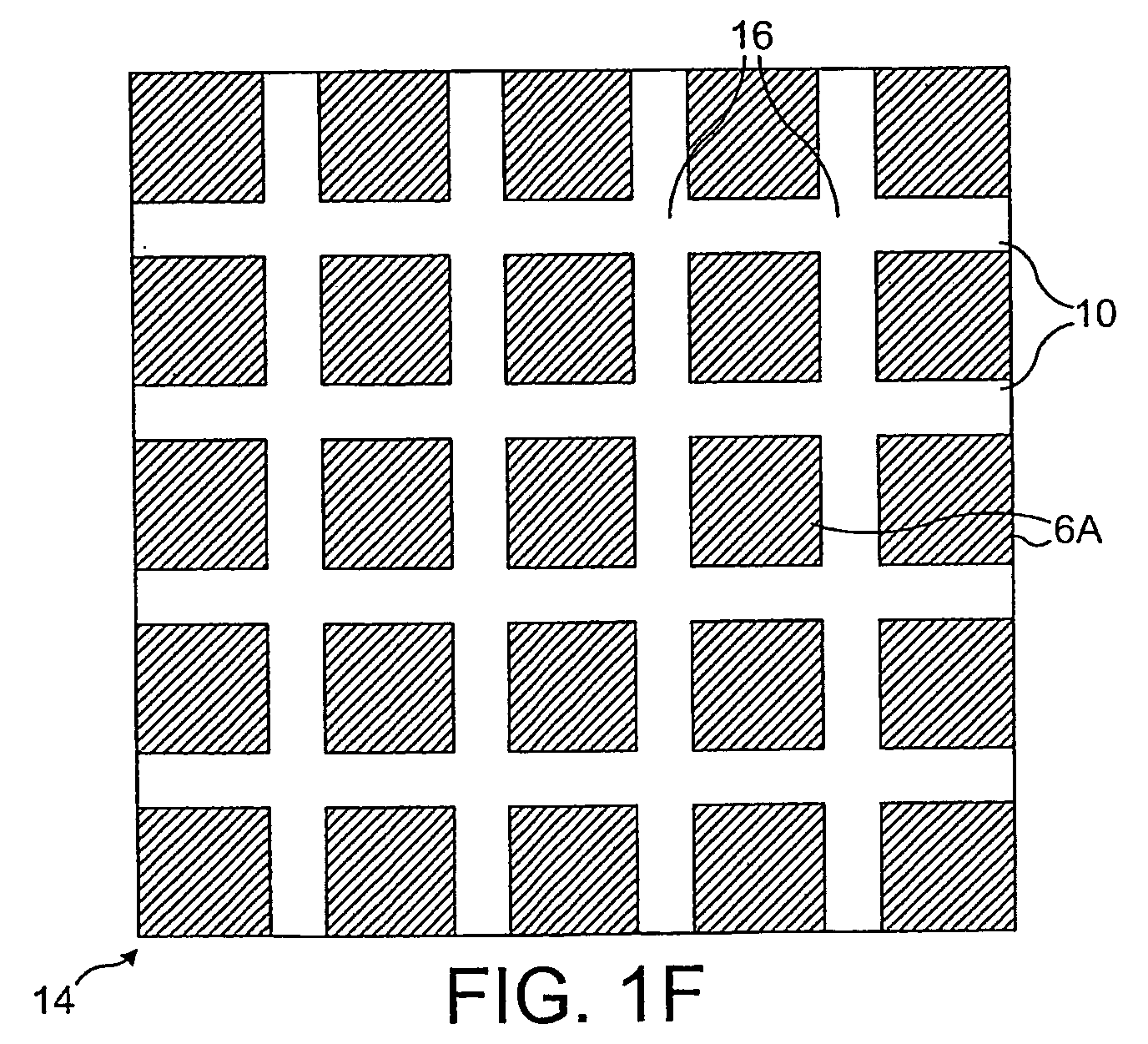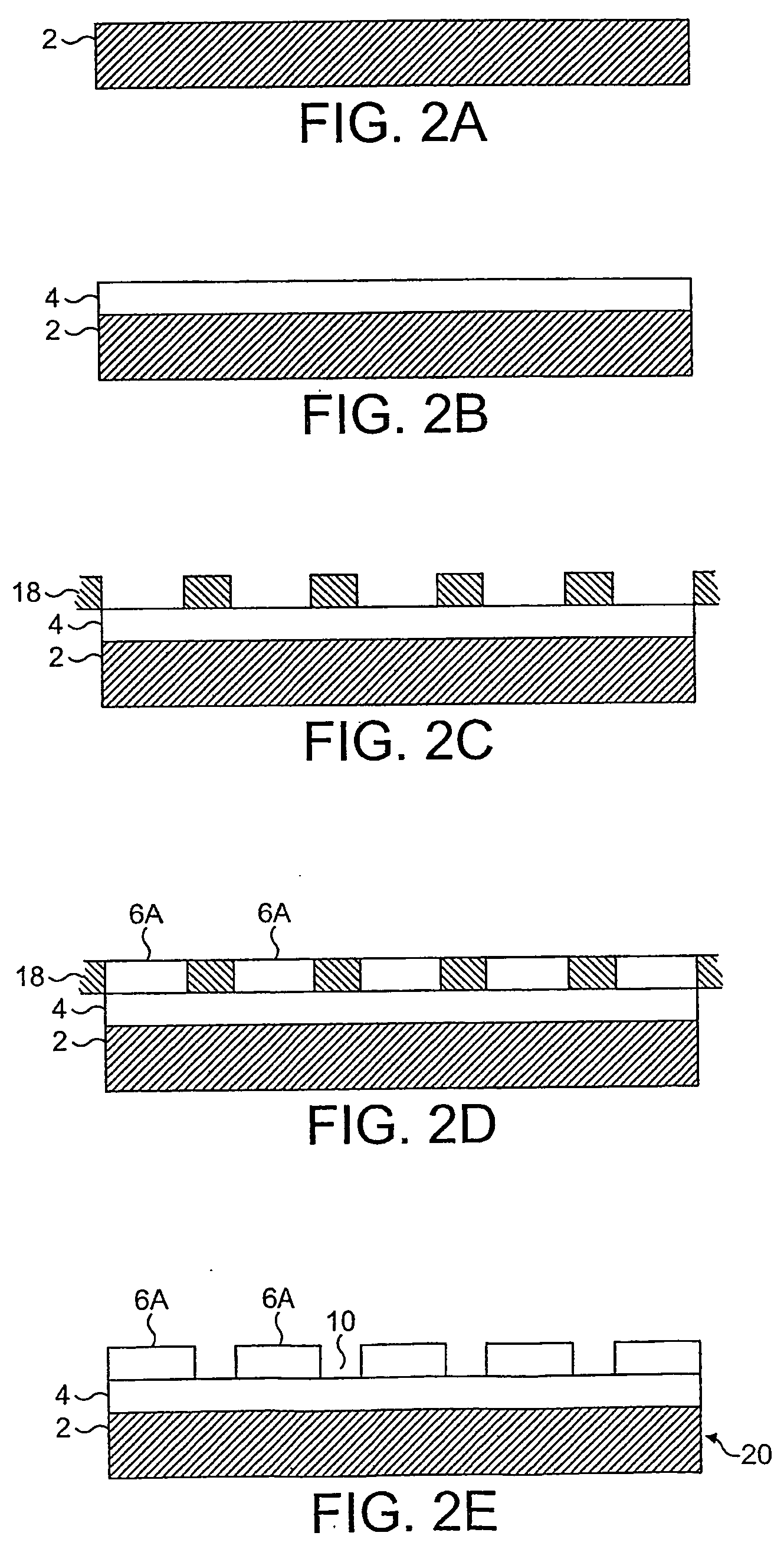Device with recessed tracks for forming a cellular network
a technology of cellular network and recessed track, which is applied in the field of devices for forming cellular networks, can solve the problems of inability to determine the placement of cells at predetermined sites, the formation of cell connections along the track and the placement of cells at the predetermined sites cannot be relied upon, and the failure to form the desired network
- Summary
- Abstract
- Description
- Claims
- Application Information
AI Technical Summary
Benefits of technology
Problems solved by technology
Method used
Image
Examples
Embodiment Construction
[0083] Preferred embodiments of the present invention will now be described with reference to the accompanying drawings.
[0084]FIGS. 1A to 1E illustrate the stages in a process to manufacture a device for forming a cellular network. The Figures show the construction of the device in layers viewed from the side.
[0085] Referring to FIGS. 1A to 1E, a substrate 2 is shown in FIG. 1A. A layer of hydrophilic material 4 is deposited on the substrate 2, as shown in FIG. 1B. Next, a layer of hydrophobic material 6 is deposited on the layer of hydrophilic material 4 to form the intermediate structure illustrated in FIG. 1C.
[0086] A mask 8 is positioned above the hydrophobic layer 6 as shown in FIG. 1D. The mask 8 is preferably substantially grid-shaped in plan view (not shown) and defines a series of tracks and sites. Gaps 11 in the mask 8 defining the tracks and sites are illustrated. The mask 8 is substantially transparent to radiation in the areas defining the tracks and sites (gaps 11) ...
PUM
 Login to View More
Login to View More Abstract
Description
Claims
Application Information
 Login to View More
Login to View More - R&D
- Intellectual Property
- Life Sciences
- Materials
- Tech Scout
- Unparalleled Data Quality
- Higher Quality Content
- 60% Fewer Hallucinations
Browse by: Latest US Patents, China's latest patents, Technical Efficacy Thesaurus, Application Domain, Technology Topic, Popular Technical Reports.
© 2025 PatSnap. All rights reserved.Legal|Privacy policy|Modern Slavery Act Transparency Statement|Sitemap|About US| Contact US: help@patsnap.com



